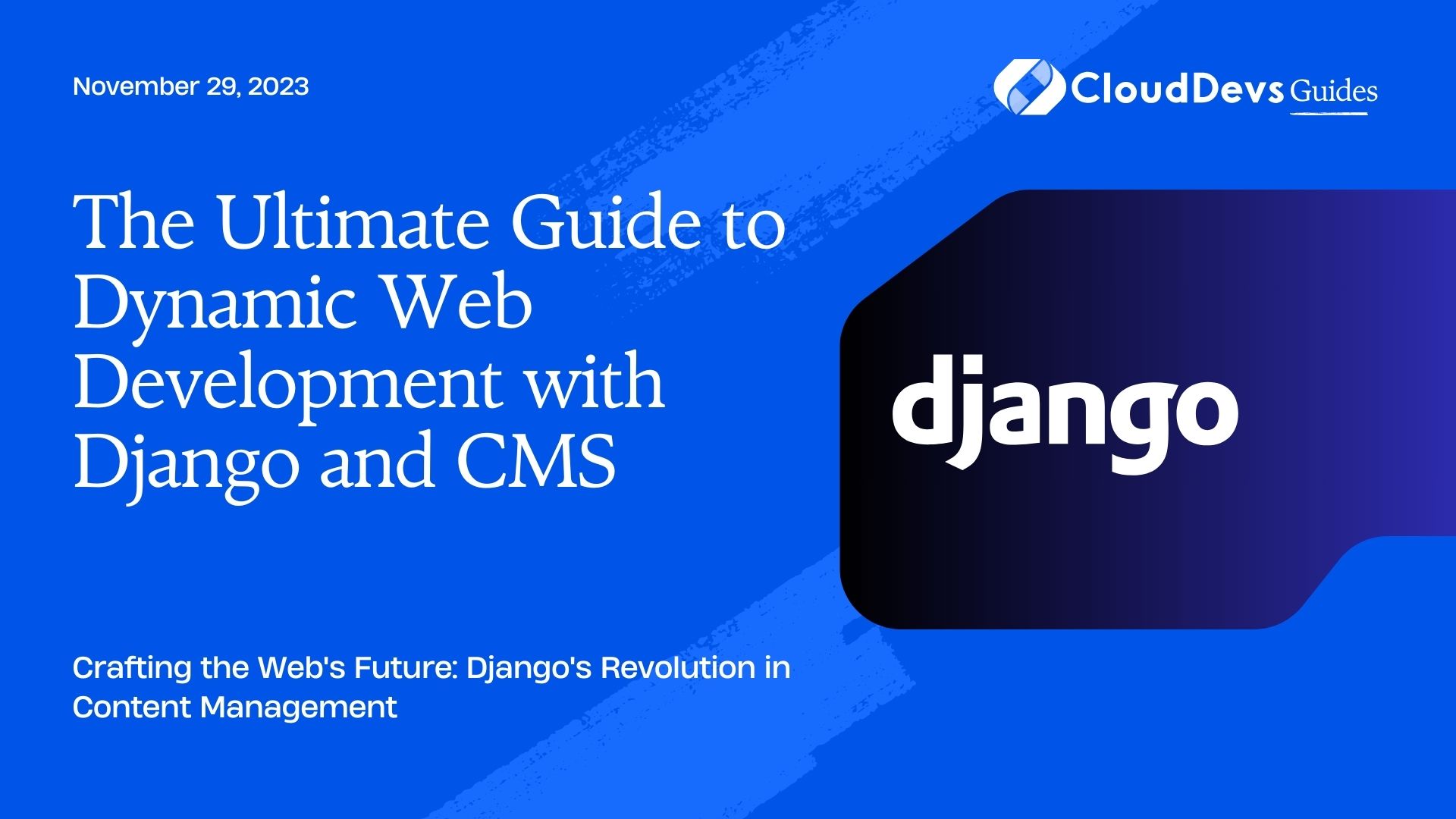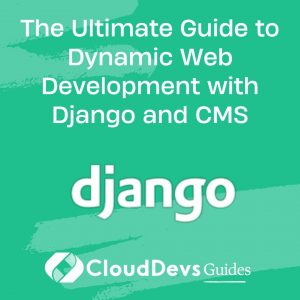The Ultimate Guide to Dynamic Web Development with Django and CMS
Web development has evolved dramatically over the years, with an ever-increasing focus on dynamic, interactive, and scalable websites. The traditional approach of coding static HTML pages no longer suffices for today’s diverse and demanding online audiences. Content Management Systems (CMS) have risen to prominence as a solution, allowing developers and content creators to build, manage, and publish digital content easily. Among the myriad of technologies that power these CMS platforms, Django, a high-level Python web framework, has distinguished itself.
Table of Contents
In this blog post, we’ll explore Django’s relationship with CMS platforms and illustrate how it aids in the creation of dynamic websites with some examples.
1. What is Django?
Django is a web development framework written in Python. It was designed to facilitate the rapid development of web applications by providing a clean and pragmatic design architecture. With Django, developers can create robust web applications with lesser code and in less time. Some of its core features include:
– An Object-Relational Mapping (ORM) system.
– A built-in administrative interface.
– Form handling capabilities.
– A templating engine.
– Built-in security features.
2. Why Use Django for CMS Development?
There are a plethora of reasons that make Django a go-to choice for CMS development:
– Flexibility: Django’s modular nature means it’s easy to integrate other apps and services.
– Security: It offers various built-in security features like cross-site scripting (XSS) protection and SQL injection prevention.
– Scalability: Large-scale platforms, including Instagram and Pinterest, use Django, which attests to its ability to handle massive traffic and vast amounts of data.
– Community and Packages: Django boasts a vibrant community that offers tons of plugins and packages, many of which are specifically tailored for CMS functionalities.
3. Examples of Django-Powered CMS Platforms
3.1. Wagtail
Wagtail is a popular, open-source CMS built on top of Django. It provides an elegant interface for content editors and delivers robust performance.
Key features:
– StreamField: Allows complex content structures without tying the developer down to fixed blocks.
– Snippets: Reusable content bits.
– Image cropping: In-browser image focal point selection.
Example: A blog website can leverage Wagtail’s StreamField to allow editors to craft articles with a mix of text, images, and videos in any order, while also using snippets for common elements like author bios.
3.2. Mezzanine
Another open-source CMS powered by Django, Mezzanine offers a simple yet powerful platform for content management.
Key features:
– Hierarchical page navigation.
– Built-in blog app.
– Seamless integration with third-party apps.
Example: E-commerce sites can utilize Mezzanine to structure product pages hierarchically, use its blog feature for content marketing, and integrate shopping cart functionality using Cartridge, a related e-commerce platform.
3.3. django CMS
Specifically named after its parent framework, django CMS offers an intuitive drag-and-drop interface and is renowned for its frontend editing capabilities.
Key features:
– Frontend content editing.
– Plugin architecture.
– Multi-language support.
Example: A multinational corporation could utilize django CMS to manage and edit content directly from the frontend, incorporate custom plugins to showcase their services, and cater to a global audience by offering content in multiple languages.
4. Creating a Simple Blog using Django
To illustrate Django’s capabilities further, let’s outline a simple procedure to create a blog:
- Setting Up:
– Install Django and start a new project.
```bash pip install django django-admin startproject myblog ```
- Creating the Blog App:
```bash cd myblog python manage.py startapp blog ```
- Defining the Model:
In `blog/models.py`, define a `Post` model with fields like `title`, `content`, and `created_at`.
- Admin Interface:
Django provides a built-in admin interface. Register the `Post` model in `blog/admin.py` to manage blog posts easily.
- Views & Templates:
Define views in `blog/views.py` to display the blog posts. Create corresponding templates in the `templates` folder.
- URL Mapping:
In `myblog/urls.py`, map URLs to the defined views.
- Running the Server:
```bash python manage.py runserver ```
This simplistic overview showcases how quickly one can set up a content-rich application using Django.
Conclusion
Django’s rich feature set, combined with its modular and scalable nature, makes it an exceptional choice for developing content management systems. Whether you opt for a pre-existing Django-powered CMS like Wagtail or decide to build a custom solution, Django provides the necessary tools to ensure your platform is dynamic, secure, and high-performing.
Dynamic websites are the heartbeats of the modern web. Embracing technologies like Django ensures that developers can keep up with evolving digital landscapes and deliver outstanding user experiences.
Table of Contents







